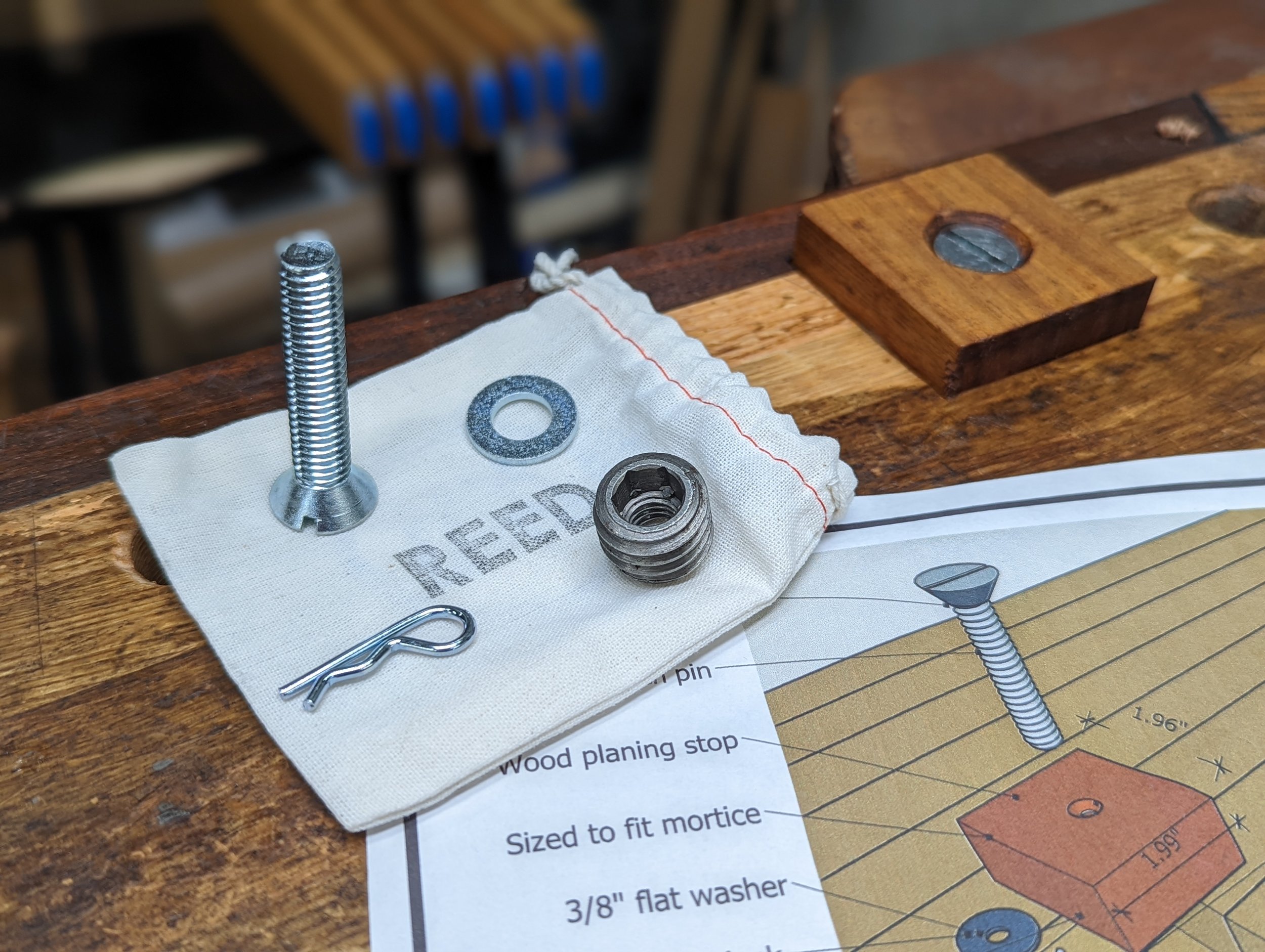 Image 1 of 3
Image 1 of 3

 Image 2 of 3
Image 2 of 3

 Image 3 of 3
Image 3 of 3




REED Honing guide v1.2
The REED Honing Guide is designed to handle any blade from 1/16” all the way to 4” wide. You can also make angled blocks to allow the plane to sharpen skewed irons.
This is the updated guide with angle pins and soft stop knob.
The guide can be used in the traditional orientation, running the iron perpendicular to the sharpening plate, or you can change the orientation and run the edge of the iron in the direction of the sharpening plate.
The REED honing guide is designed to work on almost any sharpening system.
The back of the blade or chisel registers on the rods, and the ends are clamped along the sides of the blade with three pins. This provides consistent connection and guarantees 90 degrees to the side sharpening.
These parts are made by REED Planes and distributed by Wood By Wright. Feel free to contact either of us at any time with your questions. James Wright: JamesWright@woodbywright.com Jeffrey Warshafsky: reedplanes@gmail.com
A bit about REED Planes:
Reed Planes was developed from my frustrations with using Stanley planes and old tired Norris planes. My goal was to create a handplane that would solve the shortcomings of these planes as well as a way for them to be adjustable due to wear over time. I have adapted many of my improvements for replacement parts that can easily modify a Stanley handplane.
Detailed instructions on use can be found here: https://drive.google.com/file/d/1urRRTkoKAYEAqXsPVoQsbBV3uhHYlkEH/view?usp=sharing
The REED Honing Guide is designed to handle any blade from 1/16” all the way to 4” wide. You can also make angled blocks to allow the plane to sharpen skewed irons.
This is the updated guide with angle pins and soft stop knob.
The guide can be used in the traditional orientation, running the iron perpendicular to the sharpening plate, or you can change the orientation and run the edge of the iron in the direction of the sharpening plate.
The REED honing guide is designed to work on almost any sharpening system.
The back of the blade or chisel registers on the rods, and the ends are clamped along the sides of the blade with three pins. This provides consistent connection and guarantees 90 degrees to the side sharpening.
These parts are made by REED Planes and distributed by Wood By Wright. Feel free to contact either of us at any time with your questions. James Wright: JamesWright@woodbywright.com Jeffrey Warshafsky: reedplanes@gmail.com
A bit about REED Planes:
Reed Planes was developed from my frustrations with using Stanley planes and old tired Norris planes. My goal was to create a handplane that would solve the shortcomings of these planes as well as a way for them to be adjustable due to wear over time. I have adapted many of my improvements for replacement parts that can easily modify a Stanley handplane.
Detailed instructions on use can be found here: https://drive.google.com/file/d/1urRRTkoKAYEAqXsPVoQsbBV3uhHYlkEH/view?usp=sharing




























